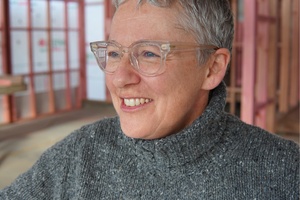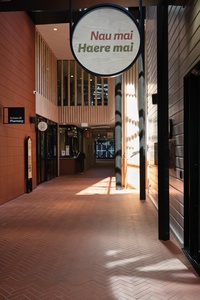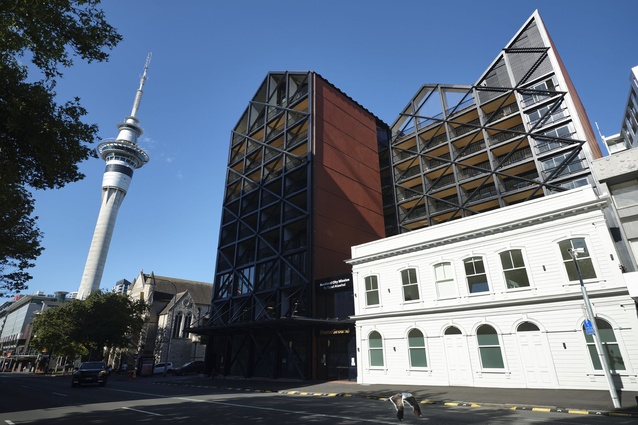To review or listen?
Two recent events made me think about approaching this column and my housing pledge from a different angle. The first was a visit and guided tour of HomeGround, the new build by Stevens Lawsons Architects, the second was a conversation with a friend that has recently returned to the country from abroad.
My friend said he had read the column and found it interesting, and that it made some architects that he knew feel disgruntled. When I asked why that may be, he replied that I discussed ideas and should expect that those ideas would be criticised. I felt as though I had been reviewed; this made me think about the role of the architectural review or opinion column and their relationships to the built realm.
At about the same time as I was turning this over, I was also considering the recent discursive space opened up in the initial review of Surrey Crescent Cohaus by Christopher Kelly, and the responses from Lisa Webb and, then, the architects of the project, Studio Nord. The rejoinders shared a dialogue of self-awareness that was sincere and pleasantly (for me, at least) dark in humour: “take my Alfa keys out of my cold, dead fingers” still makes me laugh. And the clarity of process in Studio Nord’s reply: it was focused and in touch with the cliff face that is the prospect of home ownership in the current crisis.


For my part, I found the numbers being tallied up as I made my way through Kelly’s review vertiginous. A glazed ham sheen tends to film over my eyes when I see any figure over one-ish million dollars. I also kept reading the DF’s abbreviation as DILFs, which was somewhat distracting – Driver Families, Driver Families. I am not sure why; it is just what my eyes kept doing to the letters. Additionally, at this point as a renter, I resent large berms for their inefficient use of land so the idea of a light-dappled orchard over wild long grasses, like that of Sissinghurst Castle Garden, well, frankly, the mind boggledeth. But, mostly, I wondered about the genre of the architectural review and its function in broader society, and its role in turning the built realm back into ideas, in a cycle of knowledge production. In a practical way, it’s probably good to assume in an architectural publication that the audience will be, I guess, architects, and the architectural profession writ large. But then, is this an echo chamber? Or is this community? What sort of matrices are we holding up to a building now, for what insights?
While I considered these thoughts, a writing assignment offered me the opportunity to visit HomeGround on a guided tour with principal architects Nicholas Stevens and Gary Lawson. I took with me on that experience the question of the architectural review: who is it for and to what end? While I understood the task was to review the merits of the architecture, I found myself curious about the historical relationships between Christianity, colonisation and the Mission’s statement to address homelessness. The Mission advocates that housing is a human right, working towards homelessness being rare, brief and non-recurring. It addresses it through short-term support, long-term support solutions and advocacy within the systems that contribute to homelessness.
In the Aotearoa New Zealand context, to consider homelessness, one must also consider the long shadow of colonisation, and the role of land loss and land alienation in shaping contemporary Māori housing. Severe housing deprivation prevalence rates for Māori are five times the European rate, as at the 2018 estimate published by Te Tūāpapa Kura Kāinga1. It is also likely that, despite the severity of these numbers, inequity is greater than that recorded. Pacific people are also impacted by housing inequity, with 7 per cent of those living without shelter, 9 per cent of those living in commercial accommodation, 30 per cent sharing accommodation, and 21 per cent living in uninhabitable housing. Reinstating housing for those experiencing homelessness is to address the human right to safe and secure housing. To review a building that sets out to do so, what exactly is the architectural reviewer looking for?

In an effort to make sense of this, I returned to a PhD dissertation: Jesus the Bum by New Zealand theologian Robert Myles. It was a formative read for me in the first studio course outlines I created as a tutor. The thesis made me revisit my own concept of homelessness and its relationship to architecture. His point: “Although a connection between Jesus and homelessness appears frequently in scholarship, most depictions ‘romanticize’ homelessness in a way that divorces it from the marginalizing reality and reduced capacity for agency that typically accompanies the experience. This peculiarity is exploited to demonstrate how biblical interpretation is, often unknowingly, complicit in the ideological politics of homelessness in contemporary society”.2 Later, listing phenomenological concepts developed by theologians Steven Bouma-Prediger and Brian J. Walsh, Myles distils that home is a storied place, whereby homemaking transforms space into place.3

HomeGround by Stevens Lawsons is world-class. I found it humane and attentive. I found a home in it. Design feats of embodied carbon and of construction time and costs were clearly a part of its overall success as a building. And yet I did think much about what it means to write to figures, whether statistical or economical, when it is people that live in architecture, when it is people that transform space into place. Perhaps, then, the architectural review doesn’t so much as only appraise the architecture but listens closely to the stories of transformation that have taken place. A type of listening that hears the voices outside of the profession, especially of those for whom architecture can be the most transformative, so that we are not left with echo chambers.
1. Te Tūāpapa Kura Kāinga - Ministry of Housing and Urban Development. Severe housing deprivation in Aotearoa New Zealand, 2018 Report. June 2021 update. Te Tūāpapa Kura Kāinga - Ministry of Housing and Urban Development, 2021. https://www.hud.govt.nz/research-and-publications/statistics-and-research/
2. Myles, Robert James. Jesus the Bum: An Ideological Reading of Homelessness in the Gospel of Matthew, 2013.
3. Ibid.










